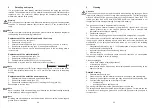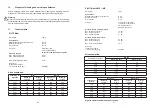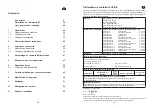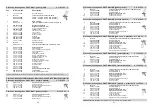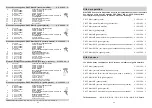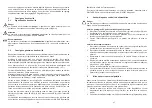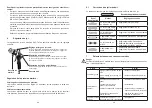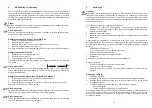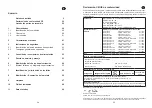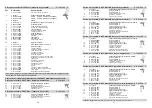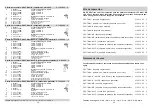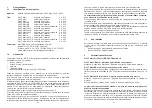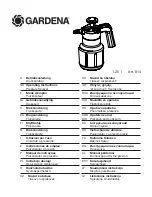
33
32
Pay attention to the following safety warnings when using the spray gun!
•
Always wear proper respiratory protection masks and protective overalls when
using the spray gun. Airborne particles can damage your health!
•
Always wear suitable hearing protectors in the vicinity of the spray gun. These
spray guns produce sound levels of approximately 85 dB(A) (PILOT Maxi) or
83 dB(A) PILOT Maxi-MP and PILOT Maxi-HVLP).
•
Ensure that the working area is absolutely free from open fires and naked lights
– and that smoking is strictly prohibited. The spraying of flammable liquids (e.g.
paint, adhesives) is always accompanied by the risk of fire and explosion.
•
When spraying materials, keep hands and other parts of the body away from the
nozzle of the gun when it is under pressure. Risk of injury!
•
Relieve the spray gun of all pressures when work is complete. Lines left in a
pressurised condition might burst and their contents are likely to injure persons
standing nearby!
6
Adjusting the Spray Pattern
The spray pattern of the PILOT Maxi can be changed by adjusting the gun as follows:
Adjusting the Material Pressure
Pressure-Feed Cup Version:
The material pressure can be adjusted with a screwdriver at the restriction valve.
Material Connection Version:
The material pressure can be adjusted only at the controls of the pumping system or
at the material pressure tank. Please observe the operating instructions and safety
warnings issued by the manufacturers concerned.
Air connection
Setting a wide or round jet:
The adjusting screw is used to adjust the width of the spray jet. The
jet can be changed to a wide jet by turning the screw anti-clockwise
(screwing out) and to a round jet by turning the screw clockwise
(screwing in).
Adjusting the atomising air flow rate
The atomising air flow rate can be adjusted by screwing the
adjusting screw in or out.
Setting the material flow rate:
The material flow rate can be adjusted by screwing the adjusting
screw in or out. The flow rate is increased by turning the screw anti-
clockwise (screwing out) and decreased by turning the screw
clockwise (screwing in).
Material
connection
6.1
Correction of Spray Pattern Imperfections
The following table shows how to correct a defective spray pattern.
Spray pattern
test
Deviation
Necessary adjustment
Swollen centre
• Spray jet should be flatter
Swollen ends
• Spray jet should be rounder
Coarse pearl effect
• Increase atomising air pressure
Unduly thin paint layer
in centre
• Decrease atomising air pressu-
re
Split centre
• Increase nozzle diameter
• Reduce atomising air pressure
• Increase material pressure
Crowned centre
• Decrease material pressure
• Increase atomising air pressure
7
Trouble shooting
Warning
Prior to any retooling the spray gun should be depressurized state, i. e. atomising air
as well as the material pressure - risk of injury.
Fault
Cause
Remedy
Dripping from
the nozzle
The nozzle or needle are dirty or
damaged
The setting screw (pos. 18) is tur-
ned too far to the back
• Clean or replace
• Adjust by turning clockwise
Pulsating or
unsteady jetl
Not enough material in the tank
Cup is tilted too much
Material nozzle loose or damaged
Material too heavy for the suction
cup
• Top-up material level
• Keep it level
• Tighten or replace (pos. 5)
• Use pressure tanks or
pumps
The gun blows
in off position
Valve cone (pos. 11) or
valve stem (pos. 10) damaged
• Replace
desired spray pattern
















